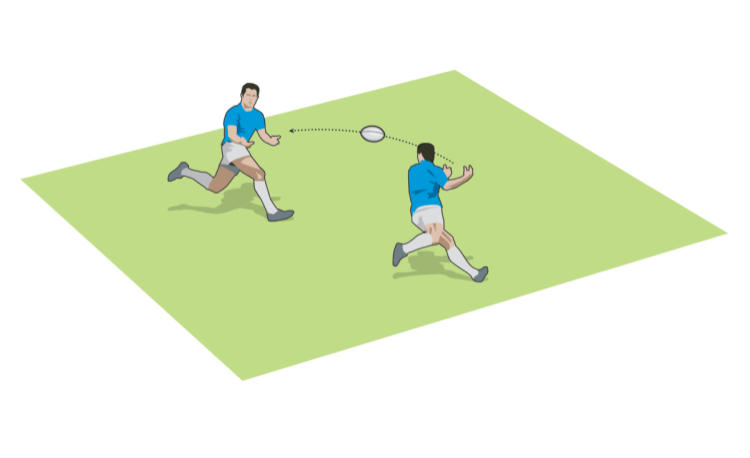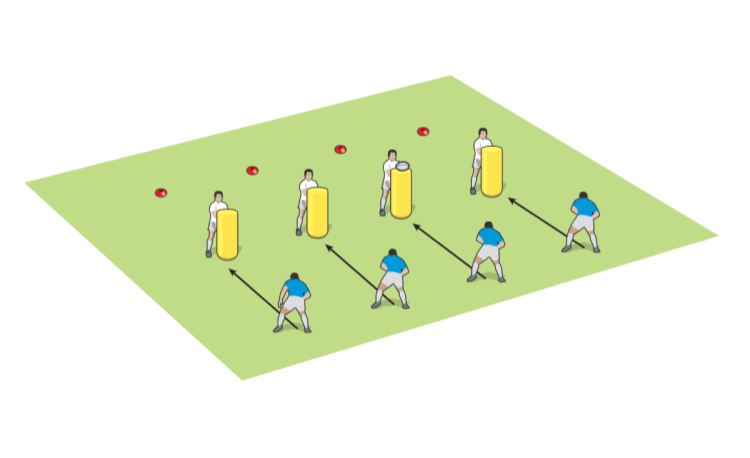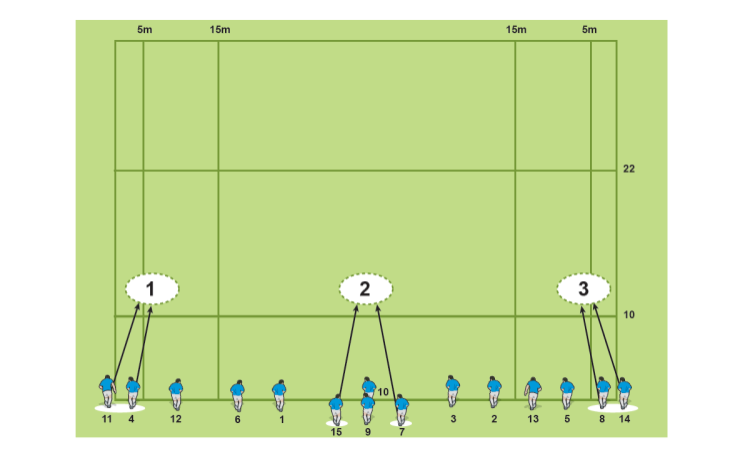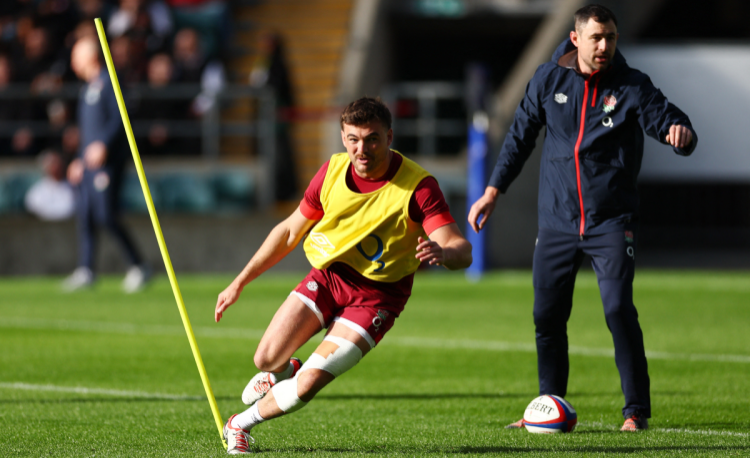You are viewing
1 of your 2 free articles
Drill to make the most of attacks close to the try line
In the rugby drill you want your ball carrier to drive forward, low towards the try line, before turning away from contact to ground the ball. Meanwhile your tacklers need to work hard to get their arms and bodies between the ball and the ground.
Throughout the drill session you need to watch how the ball carrier reacts as he drives for the line and at what stage in the move he does so. You also need to see how your defenders handle the ball carrier.
Drill set up
Two players stand facing each other two metres apart, with a line between them. A third player stands at the side with a ball. He throws the ball to one of the players who has five seconds to try to put it down over the line. The other player tries to save the try.
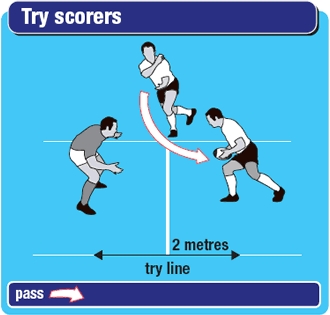
Adapt the distances between the players according to the success rate. Also make sure that the three players alternate their roles.
Developing the drill session
You can develop the drill like this:
- Vary the height of the pass – high, low, on the ground.
- Designate an attacker and let them start with the ball. Stipulate the position they can start in, for instance with the ball at their feet, or facing away from the defender.
- Start the defender one or two metres to the side of the attacker, with the attacker a metre further back from the line, to replicate a saving tackle from a covering player.
- Allow both players to move along the line, so the defender tracks the attacker until the ball is passed.
- Set up players in pairs, each with one player standing just behind the partner. Have a few practice run throughs, before allowing the players to pass and double up in the tackle.
A game situation
The drill session can be developed with a 3 v 2 game. Form groups of players with three attackers and two defenders. Set up a number of five metre boxes – one for each group – with a try line running through each about one metre from one end (put the boxes across a real try line for instance). Place a ball by the side of each box.
The attackers start at the end of the box furthest from the line, faced by the defenders. When you are ready, run to a box and kick or roll the ball in.
The attackers must pick up the ball and attempt to score over the line. After a couple of sets, change the players around and involve previously unused players. Don't use more than five players at one time.
Newsletter Sign Up
Coaches Testimonials

Gerald Kearney, Downtown Las Vegas Soccer Club

Paul Butler, Florida, USA

Rick Shields, Springboro, USA

Tony Green, Pierrefonds Titans, Quebec, Canada
Subscribe Today
Be a more effective, more successful rugby coach
In a recent survey 89% of subscribers said Rugby Coach Weekly makes them more confident, 91% said Rugby Coach Weekly makes them a more effective coach and 93% said Rugby Coach Weekly makes them more inspired.
Get Weekly Inspiration
All the latest techniques and approaches
Rugby Coach Weekly offers proven and easy to use rugby drills, coaching sessions, practice plans, small-sided games, warm-ups, training tips and advice.
We've been at the cutting edge of rugby coaching since we launched in 2005, creating resources for the grassroots youth coach, following best practice from around the world and insights from the professional game.







